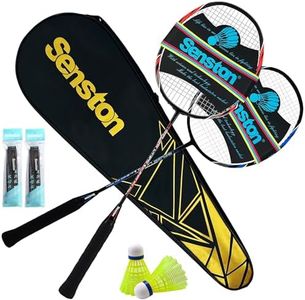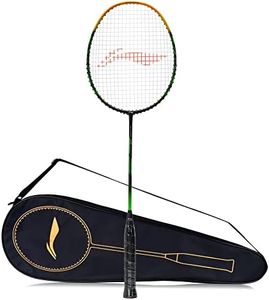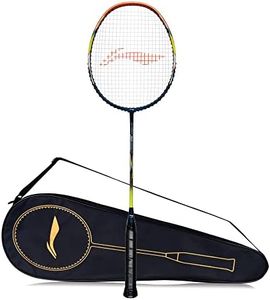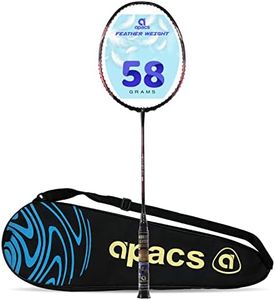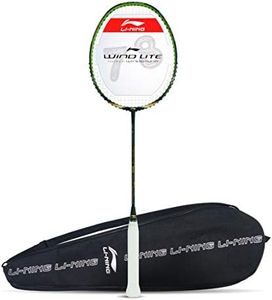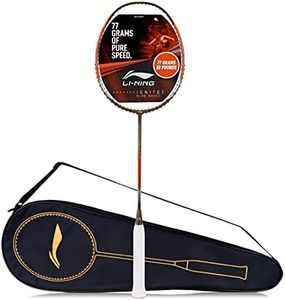We Use CookiesWe use cookies to enhance the security, performance,
functionality and for analytical and promotional activities. By continuing to browse this site you
are agreeing to our privacy policy
10 Best Badminton Racquets
From leading brands and best sellers available on the web.Buying Guide for the Best Badminton Racquets
Choosing the right badminton racquet can make a big difference in your game, whether you're just starting out or have been playing for a while. It's important to look beyond just the brand or how a racquet looks and focus on how the features match your own style, skill level, and physical strength. Think about what aspects of your game you want to improve—like power, control, or speed—and use that as your guide while considering each feature.WeightThe weight of a badminton racquet influences how easy it is to maneuver and how much power you can generate. Lighter racquets, typically ranging from 70g to 85g, are easier to swing quickly and allow for faster reactions, making them ideal for beginners, players who like quick rallies, or those with less arm strength. Heavier racquets, usually 85g to 95g, provide more stability and power, which can benefit aggressive players or those with good arm strength. Think about your physical condition and play style: if you tire quickly, a lighter racquet is helpful, but if you seek powerful smashes and can handle the extra weight, a heavier one might suit you.
Balance PointThe balance point refers to where most of the racquet’s weight is distributed—towards the head, the handle, or evenly spread. Head-heavy racquets give more power and stability for strong shots but can be harder to move quickly. Head-light racquets are easier to control and maneuver, making them great for quick defensive play, net shots, and doubles. Even-balanced racquets offer a mix of both. Decide whether you focus more on powerful smashes or quick reactions, and pick a balance point accordingly.
Flexibility (Shaft Stiffness)The flexibility of a racquet's shaft affects how much it bends during a shot, which influences both control and power. Stiff shafts bend less, giving experienced players more control and quicker response but require better technique to use effectively. Flexible shafts bend more, making it easier to add power to your shots with less effort, which is helpful for beginners or those with slower swing speeds. If you are just starting or have a slower swing, choose a flexible shaft; if you’re advanced and value precision, a stiffer shaft might be better.
Grip SizeGrip size is about how thick the handle of the racquet is. A grip that's too big or too small can tire your hand or make it harder to control your shots. Smaller grips allow for more wrist action and flexibility, which is good for quick movements and deception, while larger grips can offer more stability and comfortable feel for those with bigger hands. Try holding different grip sizes to see what feels secure and allows you to play comfortably without straining your hand.
String TensionString tension determines how tight the strings are pulled. Lower tension (18-23 lbs) creates a larger 'sweet spot,' making it easier to hit and adding some power, useful for beginners or those who need help getting distance. Higher tension (24-30 lbs) means less power from the racquet but more control, ideal for advanced players who can generate their own power and want better shot accuracy. Think about your experience: if you are newer, a lower tension is more forgiving; if you want precision and can handle it, go for higher tension.
